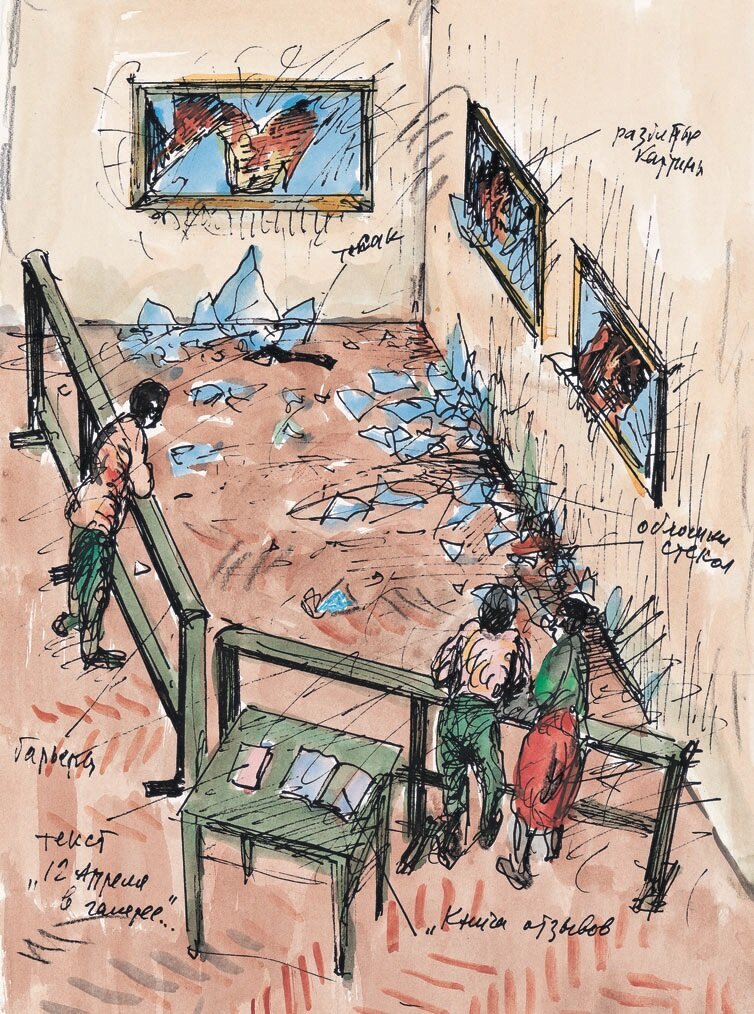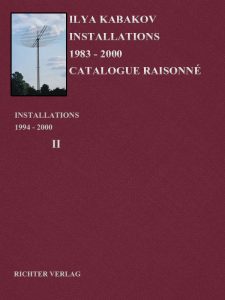The Artist's Despair or the Conspiracy of the Untalented
YEAR: 1994
CATALOGUE NUMBER: 79
PROVENANCE
The artist
Collection Robert and Melissa Soros, New York
NOTES
See No 92.
EXHIBITIONS
Galerie Barbara Weiss, Berlin, Germany
Die Verzweiflung des Künstlers oder die Verschwörung, der Untalentierten, 2 March – 22 April 1994
Rosamund Felsen Gallery, Los Angeles, CA, United States
Absolutely International, 14 July – 12 August 1995
Deichtorhallen, Hamburg, Germany
Ilya Kabakov. Der Lesesaal – Bilder, Leporellos und Zeichnungen, 19 April – 28 July 1996 (as part of No 90, The Reading Room).
Center for Curatorial Studies Museum, Bard College, Annandale-on-Hudson, NY, United States
Ilya Kabakov: 1969-1998, 25 June – 3 September 2000.
DESCRIPTION
There are three paintings (160 x 105 cm) in heavy black frames hanging on the wall of the gallery. The glass on all three paintings has been broken by a heavy object, parts of the glass have fallen out, and we can see the holes and damage to the paintings. A few words about these paintings: they were done in the Socialist Realist style typical for the 1930’s-70’s in the Soviet Union. The subjects of the paintings are also in the same style. In one, a father has come home from work; in the second, there are village girls showing their colorful shawls to each other; the third shows a grandfather, grandmother and grandchild in their garden. Next to the damaged paintings on the wall is a case with an axe inside. There is a barrier in front of the paintings, and next to this barrier, to the right of the viewer, is a table with two chairs. A text-explanation about the installation is lying on the table.
CONCEPT OF THE INSTALLATION
The concept of this installation becomes obvious after reading the text that is lying on the table. The story tells about an artist who attacked and started to destroy his paintings in his exhibition using an axe (which hangs on the wall, as evidence), being unable to restrain his dissatisfaction with his works. Hence, the whole installation is an original story about vandalism, in which the ‘vandal’ is the artist himself.
Naturally, there is a certain problem for the viewer (which resembles slightly the problem presented by Lucio Fontana), as to how to treat the destroyed paintings: as destroyed Socialist Realist paintings and as an example of ‘good classical art,’ or should he take everything together – the damaged paintings, the axe, the barrier and the explanation – as a new artistic genre? This problem, too, as part of the installation, is also brought to our attention in the form of commentary (that presents the opposition ‘talented/untalented’) lying on the table next to the first text-explanation.
Images
Literature







